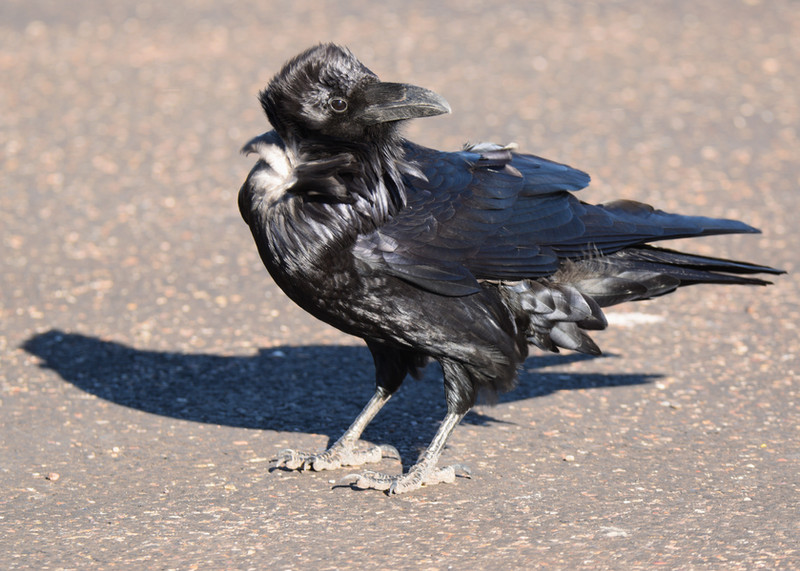HOME | DD
 Canislupuscorax — A Poor Field Mark
Canislupuscorax — A Poor Field Mark

Published: 2015-01-25 17:49:42 +0000 UTC; Views: 395; Favourites: 18; Downloads: 0
Redirect to original
Description
A common raven (Corvus corax) at the Petrified Forest National Park in Arizona.Title refers to "white-based neck feathers" being provided as trait to distinguish Chihuahuan ravens (C. cryptoleucus) from their common raven cousins. Only problem being that it's a question of "white-based" versus "pale gray-based," something not all field guides take care to point out.
Related content
Comments: 4

Thanks so much for pointing this out! The first time I visited Arizona, misidentified a number of individual corvids because of this. There are areas in Arizona where their ranges over-lap, making positive identification very difficult.
I have the added problem of having spent a good hunk of my life in Alaska, where I swear that the Common Ravens are larger and have slightly lower-pitched calls than the ones here in Washington State and the other lower western states, so I often have to look a other identification clues other than size or voice just to keep C.Corax and C.brachyrhynchos sorted out!
👍: 0 ⏩: 1

At the Bosque del Apache National Wildlife Refuge C. corax, C. brachyrhynchos, and C. cryptoleucus all occur. To this day I am still not sure whether or not I've actually seen C. cryptoleucus.
Well, individuals in polar latitudes do tend to have larger body sizes than those in more temperate zones (it's one of the 'rules' of biology - Bergman's rule) - possibly as a method of improved heat conservation through changes in the surface area to volume ratio. So there is a good chance that the Alaskan ravens are larger than the Washingtonian ones. Which could lead to a lower-pitched call with enough of a size difference. Based on personal observations I'd also say that ravens have regional accents/dialects, so difference in call doesn't need to be related to size difference. Corvids have such a large vocabulary anyway, I'm not sure voice was ever a reliable means of telling species apart. And most of the field marks to tell the various Corvus sp seem like one'd need both species right next to each other to use (and possibly an expert consultant).
👍: 0 ⏩: 1

Thanks so much for the detailed response.
National Geographic's Field Guide to the Birds of North America, sixth edition, has an interesting entry under C.corax. It states that certain populations of the species in California show distinct genetic differences from other Common Ravens in North America, and are more closely genetically linked to C.cryptoleucus than to C.corax.
I like your last sentence - You're right - you almost have to put the two species in a police line-up to tell them apart!
Again I must compliment you on all the excellent corvid photos in your gallery!
👍: 0 ⏩: 0

"white-based" versus "pale gray-based,"
That's not very different and hard to see!
👍: 0 ⏩: 0

























